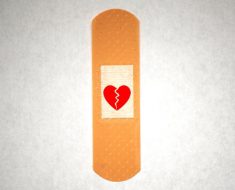When the HIV and AIDS epidemic began in the United States in the 1980s, HIV was a life-threatening condition. However, people can now manage it as a chronic health condition, much like they would diabetes or heart failure.
In this article, we examine developments in managing and treating HIV, as well as the long-term outlook.
Recent improvements

The increase in life expectancy for people living with HIV has direct links to improvements in medical therapy, which includes antiretroviral medications.
These medications help suppress levels of HIV in the blood and slow damage resulting from the infection. This suppression helps prevent progression from HIV to AIDS, or stage 3 HIV.
In the 1980s–1990s, antiretroviral therapy began as monotherapy, then it became dual therapy. Now, there is combination antiretroviral therapy, which includes using three or more drugs.

Researchers continue to work on a cure for HIV. In the meantime, combination antiretroviral therapy preserves the health of a person with HIV. It does this by suppressing the virus in the blood to undetectable levels. It is important for the person to follow their therapy plan precisely.
In fact, the Centers for Disease Control and Prevention (CDC) now report that when a person taking antiretroviral therapy has a negative viral load in their blood, the risk of transmitting the virus to a person without HIV is essentially zero.
This discovery takes researchers to a notion of “treatment as prevention,” which promotes well-controlled HIV as a way to prevent transmission through sexual contact, needle sharing, and childbirth and breastfeeding.
Because people with HIV are living much longer, they are starting to face the same health issues as other older adults.
In fact, differentiating Alzheimer’s disease from HIV-associated neurocognitive disorders is becoming an emerging issue in the population of older adults living with HIV.
Even with the advances in antiretroviral therapy, people living with HIV may experience long-term side effects of either the therapy or HIV itself.
Conditions common in long-standing HIV infection include:
- cardiovascular disease
- lung disease
- certain cancers
- HIV-associated neurocognitive disorders
- liver disease, including hepatitis B and hepatitis C
HIV also appears to increase chronic inflammation in the body, putting a person at risk of certain health conditions. However, more research is necessary to better understand this.

Life expectancy for people living with HIV has seen great improvement in recent years. In fact, a person who currently has HIV can expect to add many years to their life once they start combination antiretroviral treatment.
A 2017 study in the journal HIV Medicine indicates that a person with HIV living in a high-income country would add 43.3 years to their life expectancy if they receive a diagnosis at age 20.
Without adequate treatment, however, HIV can quickly start to damage cells in the immune system.
It is important for a person living with HIV to stick to their treatment plan to keep the virus suppressed in the blood. It is also essential for the person to work closely with their healthcare providers on a regular basis and maintain all other aspects of their health and well-being.
Source: Read Full Article





